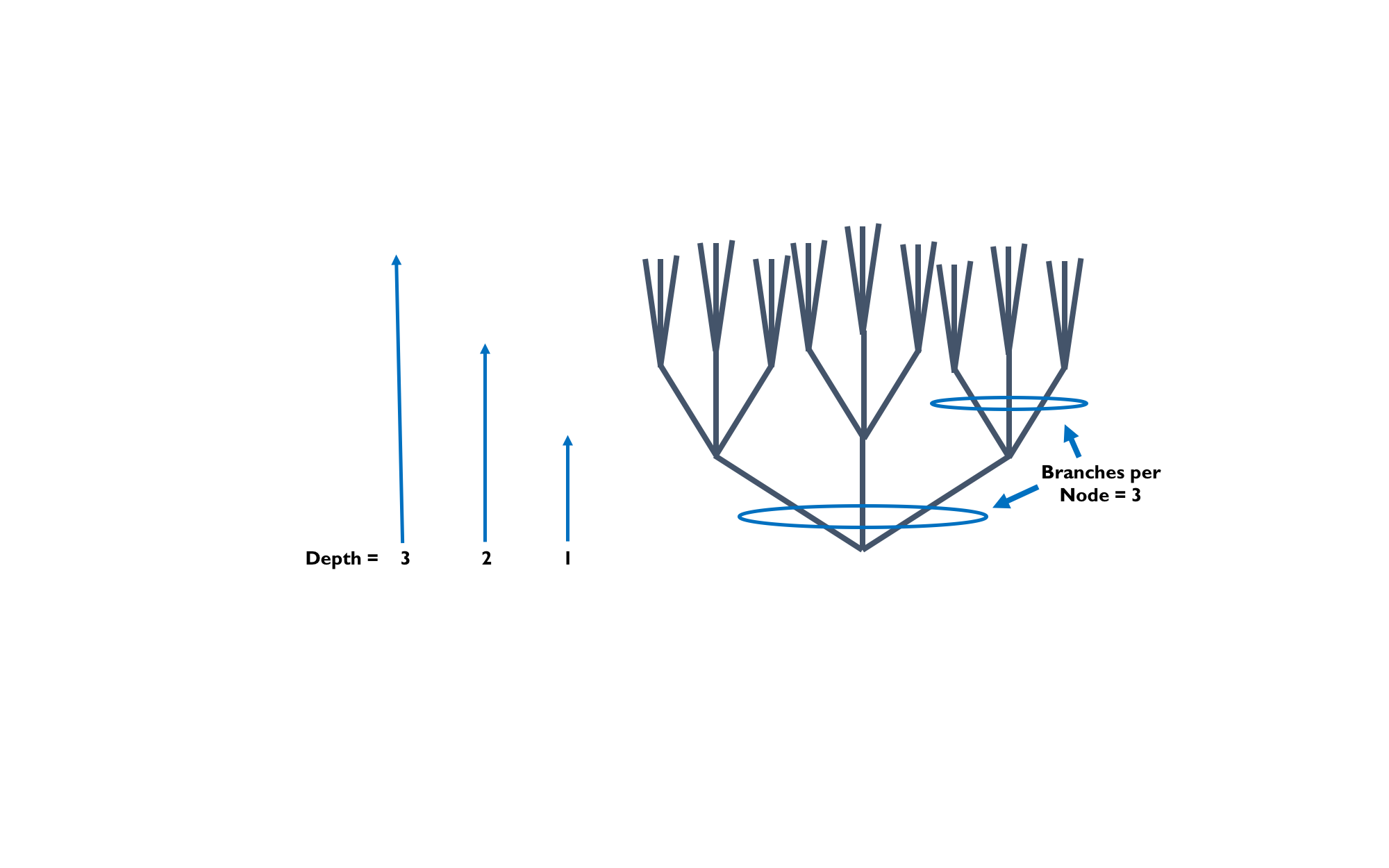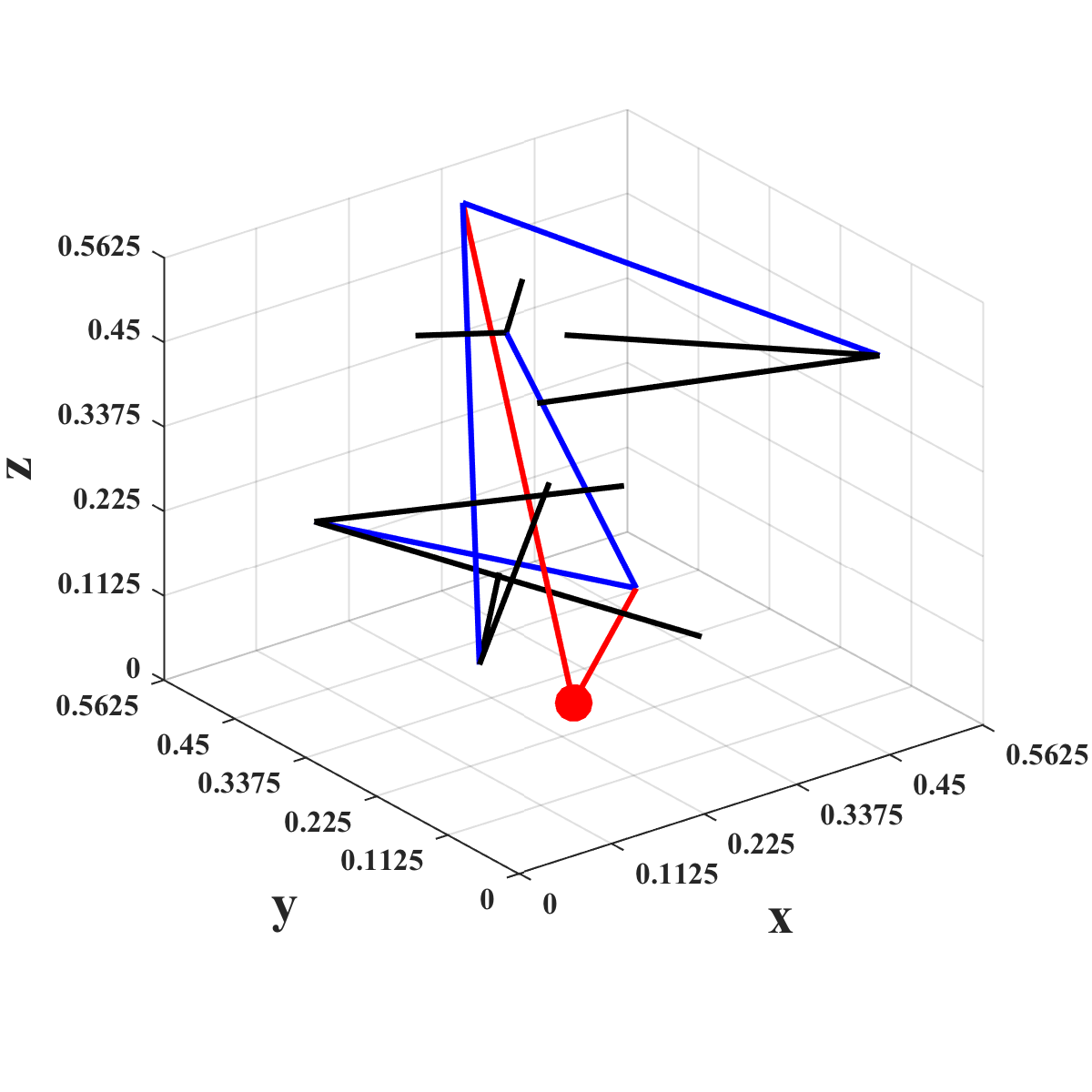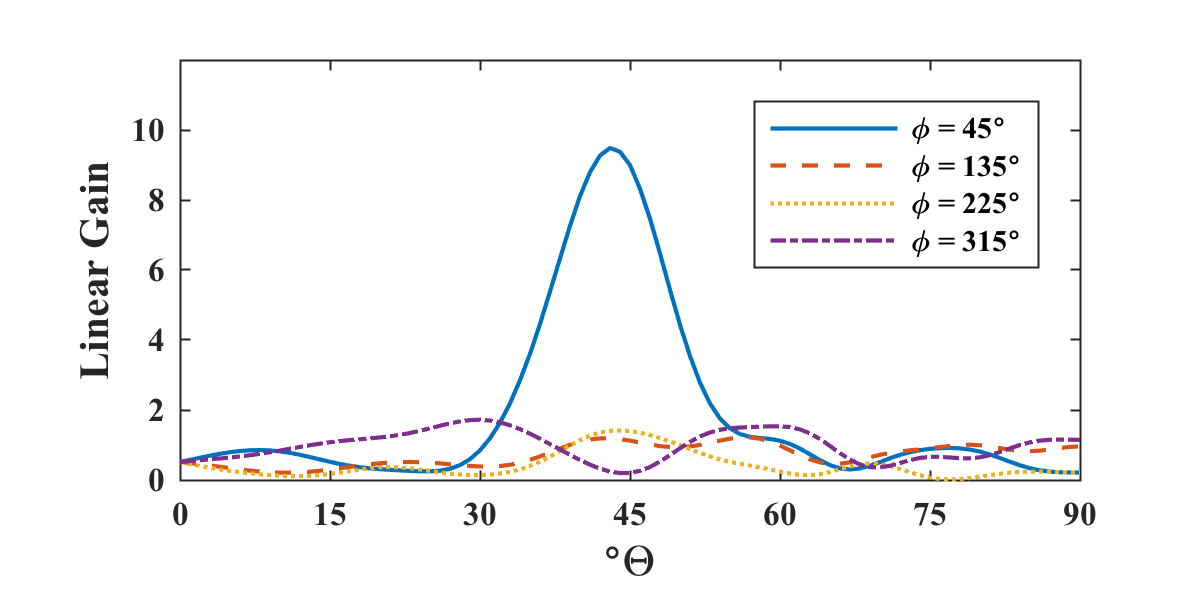This work has been published in IEEE Transacations on Antennas and Propagation.
Note: Although I have moved on to deep learning, I have really enjoyed working on this computational-intelligence project!
Our paper presents a novel optimization method used to design thin wire antennas to approximate any arbitrary antenna gain pattern. These types of antenna designs may be useful for specific tracking-search radars or telecommunication systems trying to maximize the antenna footprint without significant sidelobe power loss.
A genetic algorithm (GA) is used to optimize the design of a thin wire antenna to match a predefined antenna pattern. Briefly, a GA can be organized as:

A GA is a classic optimization technique for working with antenna design. The predecessor for our work is the “crooked wire antenna”, where a GA optimizes thin wire elements to find the best antenna structure for a given problem. Our addition to this field is the exploration of branching antennas. Rather than describing structures with a specific number of total elements, these antennas can be described with a “branching factor” and “depth”, or:

Here is an example from our work where we have attempted to focus peak power gains in the first upper quartersphere of a radiation pattern. Can you believe that this antenna:

could produce this pattern?
